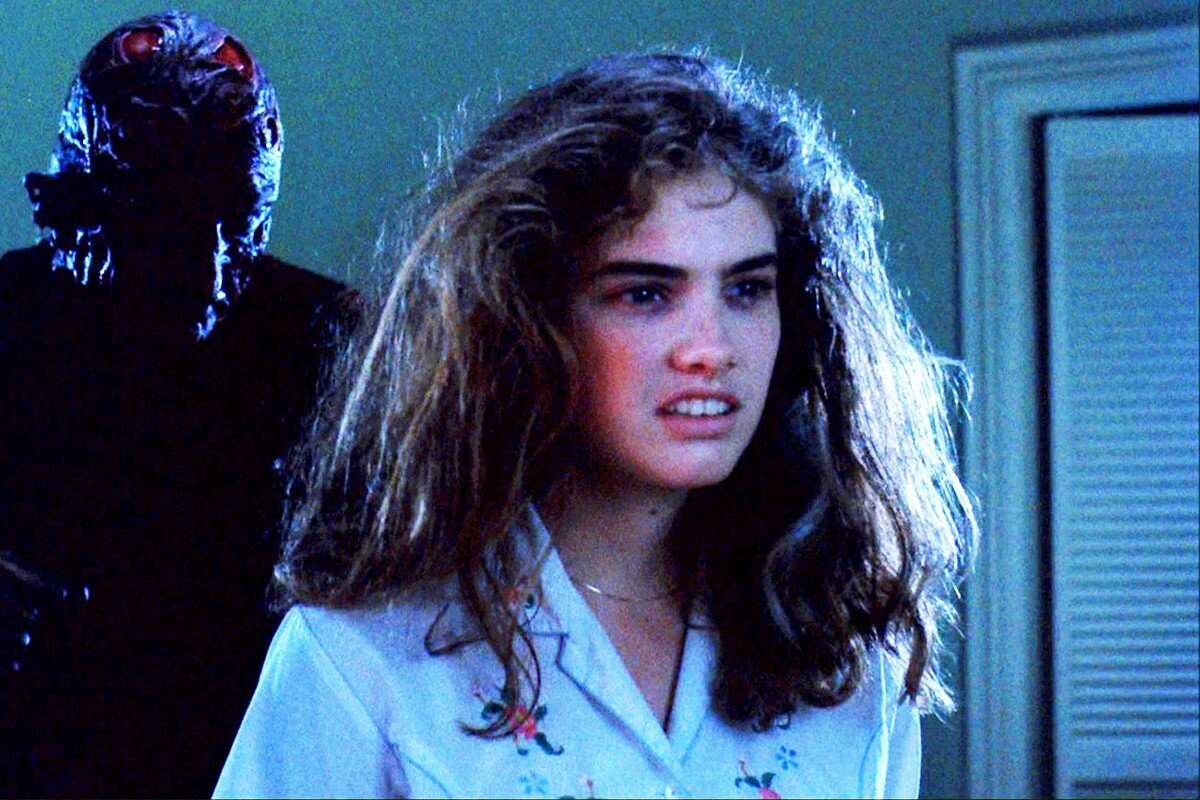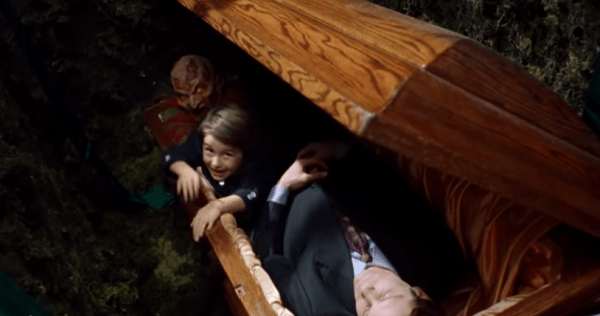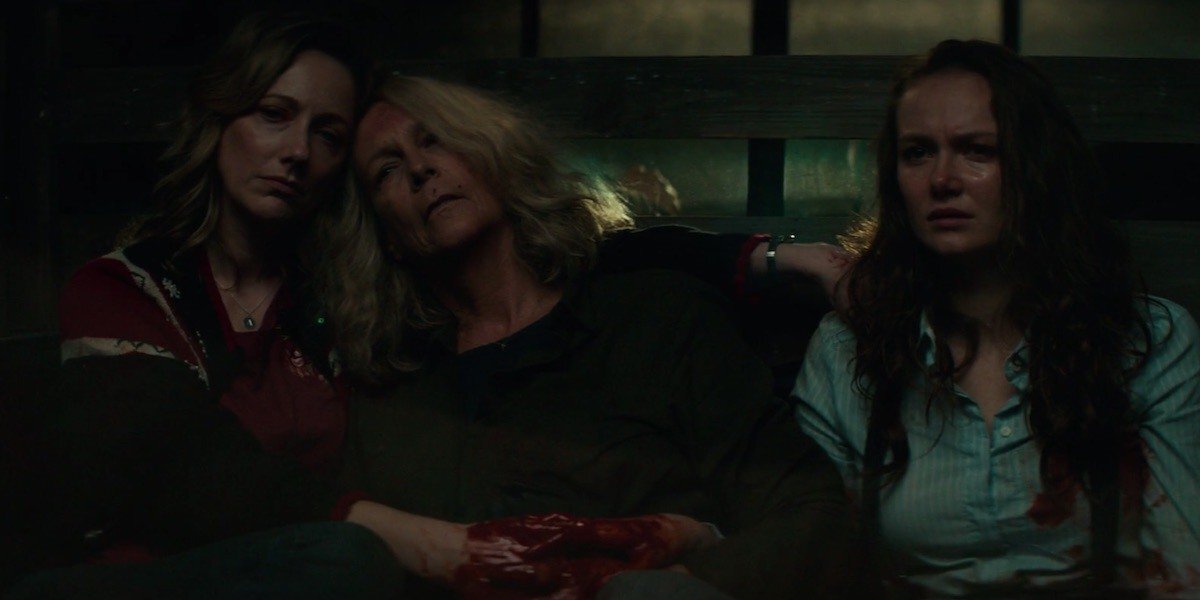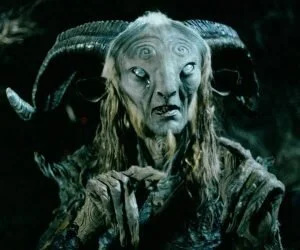Generational Trauma in Wes Craven’s New Nightmare and Halloween (2018), or: How I learned to quit worrying and kill my tormentor
Before his passing in 2015, horror film director Wes Craven spoke upon the nature of his art, offering, “horror films don’t create fear. They release it.” If any one individual should be trusted upon the matter, Craven certainly makes the cut. In his time as a filmmaker, he contributed classics such as The Last House on the Left (1972), The Hills Have Eyes (1977), the Scream franchise, and, of particular note, the Nightmare on Elm Street series. Each of the films that he had a direct hand in have an “aboutness” to them, something that lends a truth about the “real world” to the film’s events, even when the depictions themselves veer wildly into the fantastic.
John Carpenter, another “Master of Horror,” seems to be of similar thought. Responsible for the cold isolation of The Thing (1982), the underrated Prince of Darkness (1987), and his most indelible contribution, Halloween (1978), Carpenter tapped into relevant anxieties that were indicative of their times. This ranged from the perceived threat of the “Red Scare” to the more substantial mantra of “stranger danger.”
But in 2015, he spoke further upon horror narratives and how it appeals to our human experiences, saying, “There are two different stories in horror: internal and external. In external horror films, the evil comes from the outside, the other tribe, this thing in the darkness that we don’t understand. Internal is the human heart.”
It should be no surprise that each of these masters’ legacies, then, have stemmed from how they interpret internal conflicts, that is, those of the human heart. For both filmmakers, though their most iconic work, A Nightmare on Elm Street and Halloween, involve boogeymen that embody external forces of conflict, what their violence inflicts upon their victims’ hearts reveals deep-rooted fears and trauma that can only be conquered years later.
“But you can't kill the boogeyman!”
In order to understand the internal struggles posited in each series’ late-sequels, New Nightmare (1994) and Halloween (2018), it's important to address the traumas administered in their original films. As such, the internal struggles that both Nancy Thompson (Heather Langenkamp) and Laurie Strode (Jamie Lee Curtis) come away with are eerily similar.
After witnessing the death of her three teenage friends, as well as the last-minute murder of her alcoholic mother, Nancy Thompson must face Freddy Krueger (Robert Englund) all on her own.
In a moment of desperation, she recalls a bit of advice from Glen (Johnny Depp) about how turning your back on Freddy robs him of his nightmarish powers. In other words, to ignore him, to refuse believing in the boogeyman, would strip him of any external hold he had over you.
In a last-ditch attempt, Nancy does just this. After luring Freddy into the bedroom with her, she confronts him directly:
Nancy: It's too late, Krueger. I know the secret now. This is just a dream. You're not alive. This whole thing is just a dream. I want my mother and friends again.
Freddy Krueger: You what?
Nancy Thompson: I take back every bit of energy I gave you. You're nothing. You're shit.
Nancy turns her back towards Freddy as he rushes in for the kill, only to find himself fading away into nothing, vanquishing the boogeyman threat. She emerges back into the real world, with the sun shining, her friends and mother alive as they were at the start of the movie.
It had all just been a dream! She rejoins her friends in Glen’s car, ready to enjoy a carefree, teenage afternoon. They wave towards Nancy’s mom, who’s also verbally given up drinking, as they drive off towards the sun. A conquering of sins of the past. A happy ending for all.
But we soon learn that Freddy doesn’t play that way. Possessing Glen’s car and trapping them with a red-and-green striped convertible top, the Freddy-Mobile drives the briefly-united teens off towards certain doom. Even when Nancy appears to win by the rules and tries moving past this horrible chapter of her life, Freddy pulls her back in, cackling all the while.
Though this particular writer feels that this ending is a cheap, unsatisfying last scare, robbing the film of a true, earned conclusion, in light of how it informs Heather Langenkamp’s anxieties in New Nightmare, it takes on a new dimension.
Laurie Strode reconciles with a similar fate. Though she survives her initial encounter with Michael Myers (Nick Castle), she does not come out of it unscathed. By the end of Halloween (1978), all of Laurie’s friends have been slaughtered by “The Shape.” When it comes for Laurie, she’s picked up on the fact that something nefarious has been going on, but isn’t sure of the actual threat until she comes face to face with it.
Using guerilla survival tactics, Laurie fends off Michael, luring him into traps all around the house. She does well enough, but is eventually overcome by the gargantuan. At the last minute, she is saved by Michael’s psychiatrist, Dr. Loomis (Donald Pleasance), who shoots a fatal amount of bullets into Michael, knocking him out of a window.
As soon as Laurie is checked upon and the fear is thought to be over, Loomis and Laurie look out the window where Michael fell, only to find his body, the shape, gone, disappeared into the night. Carpenter’s signature score kicks in as the film cuts to shots of the stirless neighborhood. Michael’s breathing overlays these moments before the screen cuts to black. Though Laurie’s survived the horror, her nightmare is far from over.
“I thought you killed Freddy off.”
By the time Wes Craven revisits Freddy Kreuger for the final time, much has changed in the horror world. First of all, Freddy is dead, having been slaughtered by a bunch of teens via pipe bomb in the sixth film in 1991. Jason Vorhees suffers a similar fate in 1993’s Jason Goes to Hell: The Final Friday, and Michael Myers would also be “killed” in Halloween H20: Twenty Years Later (1998).
However, at the start of New Nightmare, Heather Langenkamp is pulled in once more. This time, however, the actor Heather is also playing the film’s character “Heather,” a fictionalized version of herself. Like our world, this Heather’s also starred in A Nightmare on Elm Street.
As the film begins, Heather winces at the thought of continuing the legacy of Freddy Krueger. She is high-strung and uncomfortable with the notoriety that follows her, wanting as much distance between herself and the Nightmare series as possible. It’s been ten years since its debut and as much as she’d like to put it all behind her to focus on her TV career, Krueger and all he represents refuses to let her go.
Those around her seem less enthusiastic to grant her wishes. She’s brought onto a talk show, simply to recognize and engage the fandom of Nightmare, culminating in her recoil as an actor dressed as Freddy Krueger tears his way onto the set, all as an in-universe joke. Later, she converses with New Line Cinema execs who beg her to come back for one last film, including director Wes Craven, unaware that they’ve already gotten what they want from the actress.
And how can Heather escape when even her own family is caught up in this legacy of trauma too? Visibly anxious in these opening scenes, her husband, Chase (David Newsom), shows off the SFX he’s working on for a new film. That new film, of course, happens to be another Freddy movie. Despite Chase’s enthusiasm for the project, especially the new bladed-glove he had a hand in creating, Heather struggles to hide her discomfort, forced to relive the violence enacted upon Nancy yet again.
Her son, Dylan (Miko Hughes) also shows a strong fascination towards his mother’s early career. Against her wishes, Heather catches Dylan watching a scene from the original Nightmare, causing him to scream uncontrollably when she shuts it off, something we’re told is uncharacteristic of her son. As Heather’s world begins to spin more out of control, so too does Dylan’s behavior and his well-being continues to devolve.
This lack of control connects to Nancy’s fate at the end of the original Nightmare. Even after following the acute advice of Glen, Nancy still suffers at the bladed-hand of Freddy; even when she believes she’s won, she loses--tricked over and over again. Because of the notoriety that surrounds the film and her fate, all those around Heather struggle to see her as anyone other than Nancy, destined for the same fate; they are unable to separate the characters, and so she must play her part.
“Are you ready to become Nancy once again?”
Early in the film, Chase is killed on his way home, returning from a shoot cut short after Heather is harassed by a stalker. Though his death appears to be an accident of falling asleep at the wheel, Heather visits his body in the morgue, discovering the tell-tale slash across his chest. Given his proximity to the new film, Heather’s convinced that Freddy Krueger has made his way into the real world and that he’s coming to finish the job.
In wake of Chase’s death, Heather’s anxiety manifests itself in more extreme ways, with Heather absolutely convinced that Freddy’s invading every facet of her life. At Chase’s funeral, in a scene that blurs dream and reality in the typical Nightmare way, she imagines Freddy kidnapping Dylan through Chase’s lowering casket, diving in after him to save her son. When the scare is revealed to be part of her imagination (or is it?), the other attendees look on in surprise and worry, wondering whether the grieving mother is able to handle her role as Dylan’s sole guardian.
At this point, few of the other characters put much stock in Heather’s fears, reminding her that Freddy was just an actor in makeup, or worrying that this recent grief has set her off the deep end. Even a close friend and fellow Nightmare actor, John Saxon, discredits the whole casket incident, but she protests, saying that it’s “my memory! And it seemed absolutely real.” Heather, in desperate need of being heard is met only with a short reply: “Seemed, not was.”
Heather soon finds the ear she needs when she visits director/actor Wes Craven. Though he hopes she’ll play Nancy in the new film he’s writing, he validates the nightmares and trauma she’s been feeling, as he’s been feeling them too.
He tells her about the new film that he’s been writing:
It’s about this entity, whatever you want to call it. It’s old, it’s very old. It’s existed in different forms in different times. About the only thing about it that stays the same is what it lives for, really: the murder of innocence.
This, like much of Craven’s dialogue in the film, is speaking not only about his new project, but also the unprocessed trauma Heather’s been dealing with. And just as it’s done quite a number on Heather in the years since Nightmare’s debut, the trauma’s now set its eyes on Dylan’s innocence.
In the time after his father’s death, Dylan’s behavior has become more erratic and paranoid. He fears going to sleep, mentioning Freddy by name, afraid that he’ll be eaten in his sleep. He acts out in self-harm at a public playground, disappointed at his failed attempt because “God wouldn’t take [him].”
Heather eventually takes Dylan to the hospital, worried about his spiraling health. As she speaks to Dr. Heffner (Fran Bennett), she is chastised for her involvement in the series, placing blame on her and horror films for the condition that her son is in.
Later, When Heather visits the hospital after another Freddy attack, Dr. Heffner accuses her of negligent behavior and self harm, noticing the fresh wounds on her arm. The doctor, acting out of “the welfare of [her] son” bars Heather from seeing Dylan, causing her anxiety to flare, allowing Freddy the opportunity to run wild.
The altercation at the hospital reaches its peak when, after invading Dylan’s dream, Freddy butchers babysitter Julie (Tracy Middendorf) in an identical manner to the original film’s Tina, dragging her up the wall of a hospital room and cutting her open on the ceiling. This killing is more than an homage, however, as it not only retains the sexual violence of the original, but is a haunting piece of Heather’s past that has now come to afflict Dylan. With this sexually violent recreation, Freddy and all he represents becomes as much a part of the child’s life as he is Heather’s.
“Happy Halloween, Michael”
While Laurie would, on the surface, appear to be far more in control of her life than Heather, Halloween (2018) depicts a paranoid, isolated woman whose decisions have been governed by the anxieties she’s carried in the wake of Michael’s attack. Much like Nancy/Heather, all of her friends were slaughtered by a male, malevolent invader, leaving her young, vulnerable, and with a lot to overcome on her own. But in the years since, the trauma that bore down on Laurie has also manifested itself deep within the lives around her.
Laurie’s family, much like that of Heather’s, is intrinsically tied to the trauma brought upon by her horror alum status. We learn early into the film that Laurie has an estranged relationship with her family, especially her biological daughter, Karen Nelson (Judy Greer).
Even as she became a mother and her family grew, Laurie did not lean upon her daughter, granddaughter, or spouses to help process her trauma as a survivor. Two podcasters, Aaron and Dana (Jefferson Hall and Rhian Rees), interview Laurie, revealing that she’s been through “two failed marriages” and she never regained custody of a 12-year old Karen because she was deemed “an unfit mother.”
Though Laurie seems to have tried living a “normal life,” her actions and inability to put the past behind her caused her to be seen as an “unfit mother.” Much like the threats levied against Heather over Dylan, the anxieties felt by these mothers only serve to undermine this particular tenet of their identity, stripping them of even more. While Heather is able to overcome this challenge and keep Dylan in her life, Laurie is not so lucky. By the time she and Karen share a scene together, it's clear that resentment lies within her daughter, frustrated by the mother she lacked as a child.
In scenes at Laurie’s isolated cabin, we find that she was far less interested in providing nurture than she was as being a protector, instead teaching her cub how to use her claws. Flashbacks throughout show Karen as a child target practicing on foam dummies around the compound. As the specter of Michael becomes real to Haddonfield once more, Karen slips back into her childhood training, tapping into the lethality passed on by her mother with surprising ease. Laurie and Karen quickly modify the cabin into a safehouse, taking hold in an armory hidden underneath the kitchen island. Beneath the exterior of a home, an image of safety and domesticity, lies the violence and fear that Laurie has borne since 1978--the violence and fear she’s passed on through her lineage.
If Laurie feels remorse for her failures as a mother, she rarely chooses to show it towards Karen or her granddaughter, Allyson (Andi Matichak). Before the school’s annual Halloween party, Allyson and her grandmother have an honest conversation about the tension that lies within their family:
Laurie: Look, don't worry about your mom. She will freak. But she'll get over it.
Allyson: Why can't you? The Boogeyman? All this hiding, all this preparation, it was for nothing. It took priority over your family. It cost you your family.
Laurie: If the way I raised your mother means that she hates me... but that she’s prepared for the horrors of this world, then I can live with that.
Allyson: Say good-bye to Michael, and get over it.
Laurie: Good-bye.
Though the perception is that Laurie chose this particular path for her family, thus losing them in the process, it's clear that she felt there was no other way. She is haunted by the past and understands that it may come hurtling back at any time. Though Allyson and Karen view her with skepticism and frustration, the trauma she carried alone prevented Laurie from acting any other way.
“I guess evil never dies, right?”
By the conclusion of each film, the fears that have dominated so much of Heather and Laurie’s lives have been validated and conquered. Freddy and Michael both creep in from the darkness to wholly consume their victim. Both monsters wreak havoc upon the shaky lives our heroes have built in their absence, throwing Heather and Laurie back into the harmful cycle of self-doubt and paranoia. Yet both survivors learn to process their trauma and its repercussions by letting their families in on their emotional injuries.
And so both tales must end in flame. As Freddy and Michael are immolated, so too do the flames purify the pain carried for so long by Heather and Laurie. They each escape with their families, Heather and Dylan back home, safe within her Californian bedroom; Laurie, Karen, and Allyson hold each other, clustered in the bed of a pick-up truck, barreling down country roads into the safe haven of November.
Before New Nightmare’s credits roll, Heather and Dylan find a script in their room--a final gift left by Wes Craven. A handwritten note thanks Heather for her sacrifice, for stepping into the role of Nancy one last time--that “at last, Freddy is back where he belongs.” Though their family has faced some irreparable losses, Craven’s words are sincere, as New Nightmare was his final mainline Freddy film. At last, Heather and Dylan can move forward, live for themselves, and tell their own stories.
By the close of Halloween (2018), The Strodes, too, have sustained serious losses, with Karen having lost her husband. Allyson loses not only her father, but also many of her close, teenage friends, initiating her into a tradition of survival she now shares with her grandmother and Nightmare’s Nancy.
In space of these absences, however, comes a relationship repaired with Laurie, three generations healed through listening, understanding, and an inheritance of violence. For the Strodes, however, we know this cannot last, as two sequels, Halloween Kills and Halloween Ends are locked in the pipeline.
And so for now, Laurie’s victory and growth must come with an ugly asterisk. A “to be continued.” A knowing that the anxiety she believes she’s overcome will rear its pasty head once again.
But isn’t that the way these things work? We try to understand our pain on our own. We try to talk about it. We often have to try again. We talk, and we are listened to. We are believed, and then, eventually, we begin to believe ourselves. Only then can these fears be laid to rest, even if for just a little while.












